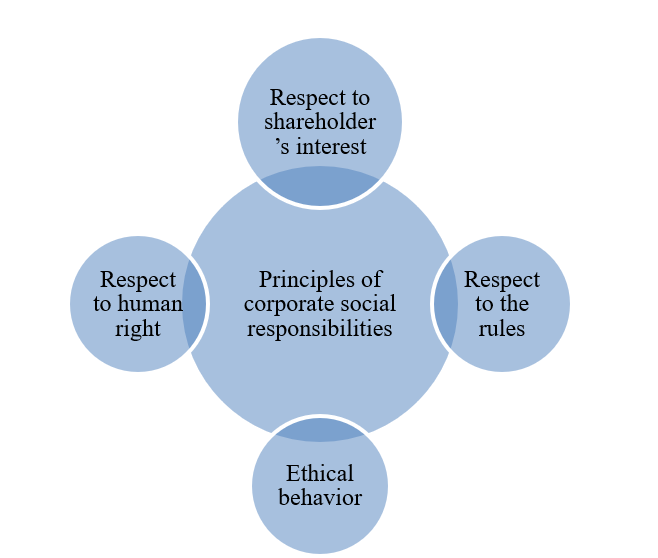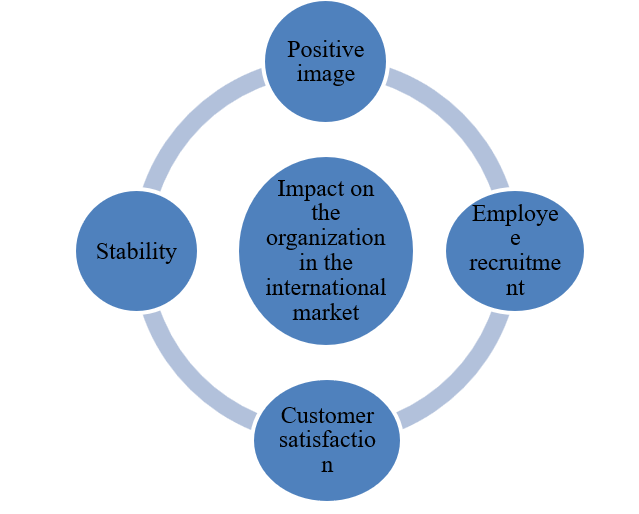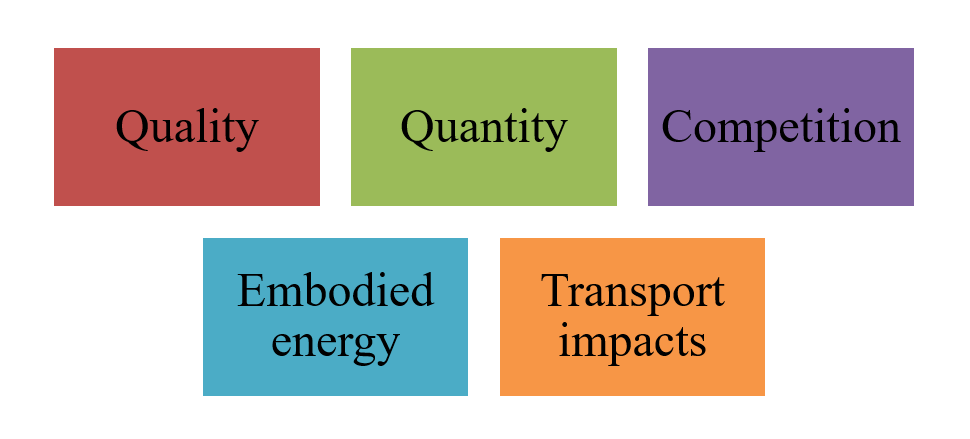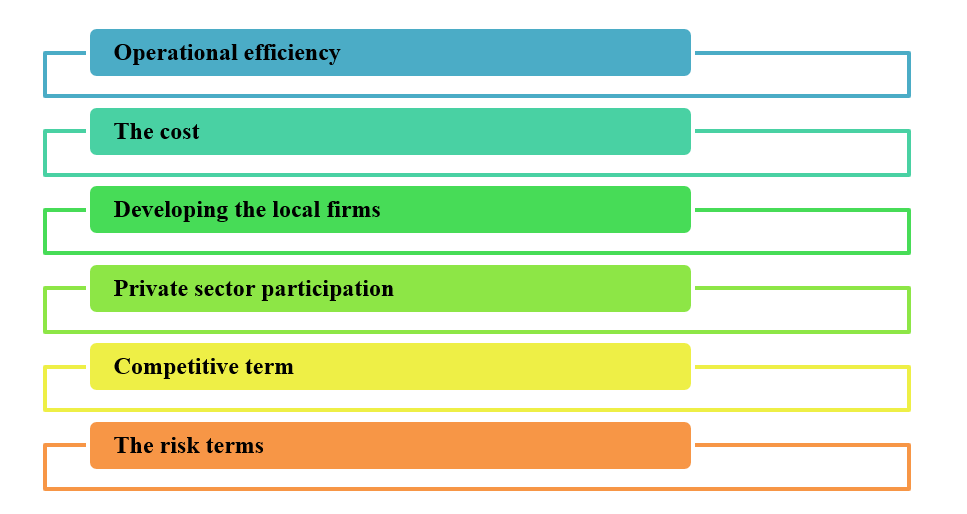EG7036 Assignment Sample – Business Procurement and Contractual Practice 2022
1. Corporate social responsibility
Corporate social responsibilities are one of the important responsibilities for a company to be socially accountable by maximizing the social objectives. Implementation of several steps or decisions will make it easier to be socially accountable, as without proper steps for a company or an organization it is a tough task to be socially responsible. Production of realistic aim, proper education of workers, contribution of volunteers and socially responsible organization environment assist the organization to amplify social objectives.
1.1. Principle and practices of corporate social responsibility
1.1.1. Principles of corporate social responsibilities
Respect to human right
The organization has to provide secure and safe goods to the customers, as they will not face any types of issues due to health. A company should respect the choice of the customers and help them as per their demand, they have no right to force the customer to choose any particular product.
The employees and management have no right to bully and snatch the right of customers when they are inside the organization (Galant and Cadez 2017). The consumer will go to that construction company that provides proper respect to all, in terms of profit, the customers are essential for every company.
Respect to shareholder’s interest
The management cannot force the shareholders for their own profit, they should respect the interest of shareholders and use them wisely. The profits percentage will be both beneficial, the company is not eligible to make profit by misguiding the stakeholders. Although the stakeholders are not willing to invest their earnings in a construction organization, the company has no right to force them in order to invest. The management system has to provide proper guidance about the business policies and terms and conditions about investing.

Figure 1: Principles of corporate social responsibilities
(Source: MS Word)
Respect to the rules
The higher authority should keep an eye on the rules and regulations as per the government and follow the rules wisely not to face any problems in business. For a construction company it is essential to maintain labour rules made by the government to get a good workforce to finish every contract. The management and leaders of the organization are bound to follow the guidelines and rules in every step-in business (Galant and Cadez 2017).
Making profit and development of business should be conducted by maintaining rules, they cannot break the rules at any conditions, breaking rules will have a huge negative impact on business.
Ethical behaviour
The management and higher authority are bound to behave in an ethical manner to the customers, employees and with the shareholders. The ethical behaviour makes the construction company reputed among all, which will help them to make development of every domain and make profit from the construction contracts. With the help of ethical behaviour of the company, the customer and employees become loyal to that organization. The leaders will maintain the ethical behaviour in the entire management system and among the employees.
1.1.2. Practices of corporate social responsibilities
Environment
The organization should focus on the impact of their actions on the environment. If the actions are against the environment as soon as possible the management of the company are bound to change the actions and make them eco-friendly (Abbas 2020). The construction market should focus on carbon emission at the time of finishing the contract. In this era the eco-friendly actions from the organizations are very much required to save the environment from industrialism.
Policies
The construction company will prepare several policies with respect to the development of employees and customers, as they are able to get proper respect from the management system (Madzík, Budaj and Chocholáková 2018). The policies will be ethical based on the workers in terms of proper respect and behaviour.
1.2. Impact on the organization in the international market
The corporate social responsibilities have a huge impact on the companies not only in the country moreover, in the international market.
Stability
The Higher authority is mainly focused on the expansion of business in the initial stage but for the long-term development stability of the company is very much essential. The corporate social responsibilities force the construction companies to make stable business organizations to meet the principles of responsibilities (Nazar et al. 2020).
The management and higher authority should focus on long term improvement rather than rapid growth and short-term profit, which will be more beneficial for an organization.
Customer satisfaction
The management and employees should hear properly the demand of the customers and fulfil by giving their best. As stated by Singh, Sethuraman and Lam (2017), customer satisfaction is a base of stability in terms of a stable management system.
The higher authority of the construction company should keep an eye to supply proper service in a developing country to the customers and make them loyal to the company. This will be more profitable respect to the organization rather than only think about profit by misleading the customers. This is one of the major positive impacts of corporate social responsibilities to the organizations.

Figure 2: Impact on the organization in the international market
(Source: MS Word)
Employee recruitment
The management system and the leaders of the companies should focus on the recruitment system. Due to corporate social responsibilities, the stability of the construction organization is an important factor, so by recruiting new young talents on one side that organizations can expand their business in the international market and on the other side the stability and reputation will also increase gradually.
This is one of the major positive impacts of corporate social responsibilities to the organizations.
Positive image
Due to corporate social responsibilities, the companies are bound to behave properly and give proper respect to everyone in the organizations. Employees, customers and shareholders should get proper behaviour from the management and leaders of the construction company (Palacios-Florencio et al. 2018).
The ethical behaviour of the company will be able to create a positive image in the country as well as in the international market, which is a major positive impact of corporate social responsibilities to the organizations.
1.3. Example
The construction companies of the UK are bound to maintain rules and regulation of corporate social responsibilities not to face the punishment of the UK government. The top companies of the UK construction market, such as Balfour Betty plc, Galliford Try plc are the major companies which take these responsibilities seriously.
As per the idea of Lu et al. (2018), the construction companies are focused in order to reduce the carbon emission and step ahead to save the environment from the curse of industrialism. Eco-friendly construction has become more important in recent times to save the environment.
The companies are bound to follow the rules and regulations maintained by the government in terms of corporate social responsibilities to be profitable in long term goals. The customers and employees will get proper respect and behaviour from the management system and higher authority.
2. Local content
Local content is one of the important key factors in order to expand and improve capacity building the business in a developing country. For the construction contract two major factors are developing supplier and workforce.
It is essential to develop the supplies and labour number to finish the task in a minimum number of days. Availability of local content is beneficial for a company in a developing country as it will take more funds to get supplies and labourer from other regions or other countries.
2.1. Benefits of having local content
The local content is required to the construction companies to finish the contract in the given time in an allotted fund. For a company in the developing country, it will be beneficial to have excess local content.
The main two local content is availability of suppliers and availability of workforce. Development of local content assists the construction company to increase the effectiveness of regional workers.
availability of suppliers
In a developing country it is very important to get an excess supply of required materials, which will save the funds with respect to import and transportation. When a company imports material from another country there are several taxes with respect to both countries and the transportation cost will also affect the allotted fund (Östensson 2017).
From all aspects it will be beneficial for a construction company to have excess supplies and the supplies should be good quality, else there will remain no option in order to import materials from another country.
availability of workforce
The workforce is the basement on behalf of a construction company to finish the allotted contract in a given time. In a developing country, the workforce or labour power is highly available, the excess labour power will be beneficial for construction companies to finish the allottee work in time.
Many of the citizens of a developing country are working in construction sites and they invite their neighbours to work with them (Soundararajan, Jamali and Spence 2018). Due to this excess labours or work force the construction company will be highly benefited as they do not have to pay extra cost to the labour for transportation purpose. If there is shortage of labour power then the company has to pay them the cost with respect to transportation purpose from their own fund.
The local content has become an essential requirement to the construction companies to complete the contract in the given time in an allotted fund. The construction company is highly benefited with the express percentage of supplies and workforce as they do not have extra expenses for several purposes. In developing the availability of workforce is high and supplies also notable.
The company should provide proper education about the work zone to be more accustomed with the work and make good steps to be an effective worker, which will be a profitable step for the company. The small and medium companies mainly rely on the multi-tasking, active labours of the area of operation or contract, as they do not have to pay extra money.
2.3. Disadvantages of having local content
The report has discussed several disadvantages of having local content in construction contracts in developing countries. According to Amoah et al. (2017), the local content in construction contracts they only work with the small business. Whereas they are unable to include such big project and therefore it can be concluded that there are some limitations in developing countries of having local content
2.3.1. Quality
The report has covered there are some difficulties to produce goods as well as difficulties to achieve the same level of produced goods which is imported in the local content. It can be stated that due to lack of knowledge of the workforce to implement the local content on construction contracts in developing countries that is why they faced a limitation of having local content clauses. Therefore, due to lack of skills or having unskilled labour in that economy may cause limitations in nature.
2.3.2. Quantity
A major problem of implementing the local content is that they are not able to produce in large scale projects. Whereas in developing countries they are unable to scale up production in a large-scale project where the raw materials as well as the goods and services in a huge number of quantities in developing countries.
2.3.3. Competition
The report has also covered that there is limited competition in the market system therefore, the local content project is very expensive in nature as well as unresponsiveness as the market needs. Whereas in developing countries there is limited competition which makes the projects so costly, and they cannot even afford these kinds of projects to implement in the construction contracts.

Figure 3: Disadvantages of having local content
(Source: MS Word)
2.3.4. Embodied energy
Embodied energy can be referred as the consumption of the energy by all the related with the production of a building. It can be stated that the distance of the transportation from the raw materials can be reduced so that the embodied energy will be reduced in the production of construction and contracts. Therefore, the embodied energy is lower in the local content of contracts in developing industries.
2.3.5. Transport impacts
There are negative impacts on the transportation of raw materials where the local content is not concerned about the reduction of the negative impacts. As per the view of White (2017), in developing industries the large scale of transportation is avoided to include their strategy or their projects.
There is also consumption of fossil fuels to create pollution in the air as well as waste in the production of raw materials in the content.
2.4. Example
The report has covered an example of a developing country which in the case of having a local content construction industry. For example, Ghana is one of the developing countries where these challenges are playing out. There are several ongoing projects in Ghana: the rail network which can include several regional lines with the country as well as the rail line to be aligned with Ghana. Whereas, the regional lines which includes coastal while running from Nigeria through Ghana to Cote d’Ivoire (trade.gov 2020).
3. PPP arrangements
The PPP arrangement is known as public private partnership where it can be used as a tool of law and regulations of road projects can be generated by the government. PPP can be used to increase road projects as well as delivery teams. The report has covered that the national highways authority has made the legal arrangement of PPP for a large road project.
3.1. Benefits of PPP arrangements
There are several benefits of the arrangements of public private partnership in road projects. As per the view of Chumba (2020), the government has to assess the benefit of PPP arrangements to justify as well as to economic calculation to do in large projects.
3.1.1. Operational efficiency
The public private partnership can be generated as to exploring the PPP as a tool of private technology as well as the new innovative ideas through the public sector to improve the operational efficiency in the sector. The report has covered that the PPP arrangement is rapidly increasing in the road projects in African’s countries.

Figure 4: Benefits of PPP arrangements
(Source: MS Word)
3.1.2. The cost
The government imposing the present and future cost in a budgetary way that may be certain by measuring the cost of infrastructure projects over the period of time.
3.1.3. Developing the local firms
The report has discussed that the local private sector has the capabilities through the joint ventures with a large-scale firm and also the subcontracting arrangements for the local firms in the areas such as, electrical works, civil works, as well as to manage the facilities, the secure services, as well as to clean and to maintain the services as well.
3.1.4. Private sector participation
The major use of PPP arrangement as a tool of rapidly exposing the state-owned organization and also the governments to maximize the construction team where they participate such as foreign enterprises. As per the view of Debela (2019), to transfer the skills leading to national winners that can be generated by their own operations as well as to eventually operate their products by joining the ventures in the market system.
3.1.5. Competitive term
The report has discussed that the personification which is created in the economy by making the entire country more competitive in nature of its facilitating infrastructure and also to gain the boost of the business strategy as well as the clients related with their utility development of infrastructure which is constructed, supported the services.
3.1.6. The risk terms
The report has discussed extracting the long-term value for the money through the risk transfer to the private sector over the project which the customer can maintain the project as well.
3.2. Disadvantages of PPP arrangements
The report has also discussed the negative side of the arrangements of PPP. Whereas there are several risks which are related with the public private partnership arrangements. As per the view of BYUN (2018), there are also some expensive costs as well as the debt and also no risk bearing policy that can be generated by the government to have the arrangements of public private partnership in the large projects which face limitations while it is doing it.
3.2.1. The cost
The cost of bidding as well as development in nature are very expensive than for the traditional government procurement of the process. However, the government has to decide as well as to determine the expensive cost that for analysing these costs and to maintain the value for money in the projects that can be appeared by the government.
3.2.2. The debt
The report has also covered that the expensive cost which is attached to the debt, so the debt is also expensive in nature in the projects. As per the view of Chilala (2019), the private sector can get the easier way to finance which is available to the return on investment which is provided by the company to create such projects.
3.2.3. Socially challenging
The public private partnership can be implemented in the large project where it can be more socially as well as politically challenged and also to introduce as well as to implement with the others. There are also some political aspects which can be implemented in the arrangement of the public private partnership of the projects.
3.2.4. The risk
The report has covered that there is no limit in risk bearing in the PPP arrangements. The report has also discussed that the private firms are cautious about accepting the risks which are beyond their maintenance. As per the view of Nalawade Pratik et al. (2019), the exchange rate is the major risk of existing the assets of the firm which is included.
Whereas if they control the risk arrangements then their price for the services will be reflected in such a way. The private sector is also concerned about the rule that was adopted by the government as to increase the number of tariffs as well as to increase the regulation frameworks of the business and so on. However, the private firm will also be expected to have a significant level of maintenance over operation whereas to accept the risks which is significant.
3.2.5. Clear and regulatory framework
The report has also covered that a legal regulatory as well as the framework of the regulations is very critical to reach the sustainable solution for the projects.
3.3. Example
The report has covered some examples which are based on the road projects in African countries which have the advantages and disadvantages of PPP arrangements. The African economy over the 15 years there was eventually growth has been made in both the transportation and financial terms.
Based on this report section there has been low density in road projects where the Africans are fast growing cities which can affect the road as well as increasing the congestion in the road. Whereas, the Dakar-Diamniadio Highway project in Senegal5 is not only created, it is safer as well as it is link between the city centre of Dakar and Diamniadio, and the Blaise Diagne airport, but can be also operated between Dakar port and the Dakar-Bamako-Ouagadougou-Niamey trans-West African highway (Ashurst.com, 2021).
Reference
Abbas, J., 2020. Impact of total quality management on corporate green performance through the mediating role of corporate social responsibility. Journal of Cleaner Production, 242, p.118458. https://e-tarjome.com/storage/panel/fileuploads/2019-11-26/1574756604_gh5.pdf
Amoah, C. and Shakantu, W., 2017. The effectiveness of the preference policies in the Ghanaian procurement law in promoting the local construction industry. Journal of Construction Project Management and Innovation, 7(Supplement 1), pp.1859-1876. Available at: https://journals.co.za/doi/pdf/10.10520/EJC-af2b57e00
Byun, H., 2018. Measuring the financial efficiency of ppp toll road projects in the republic of Korea: idea analysis (Doctoral dissertation, KDI School of Public Policy and Management). Available at: https://core.ac.uk/download/pdf/213855551.pdf
Chilala, N.R., 2019. Challenges in implementing public private partnership (ppp) projects in the road sector in Zambia (Doctoral dissertation, The University of Zambia). Available at: http://palevel.unza.zm/bitstream/handle/123456789/6723/Main%20Document.pdf?sequence=1&isAllowed=y
Chumba, C., 2020. Public-private partnership and implementation of road infrastructure projects in Kenya (Doctoral dissertation, University of Nairobi). Available at: http://erepository.uonbi.ac.ke/bitstream/handle/11295/153845/Chumba_Public-private%20partnership%20and%20implementation%20of%20road%20infrastructure%20projects%20in%20Kenya.pdf?sequence=1
Debela, G.Y., 2019. Attractive factors of public private partnership (PPP) for road projects in Ethiopia. Journal of Civil, Construction and Environmental Engineering, 4(3), p.59. available at: https://core.ac.uk/download/pdf/270186957.pdf
Galant, A. and Cadez, S., 2017. Corporate social responsibility and financial performance relationship: a review of measurement approaches. Economic research-Ekonomska istraživanja, 30(1), pp.676-693. https://hrcak.srce.hr/file/269178
Lu, W., Ye, M., Chau, K.W. and Flanagan, R., 2018. The paradoxical nexus between corporate social responsibility and sustainable financial performance: Evidence from the international construction business. Corporate Social Responsibility and Environmental Management, 25(5), pp.844-852. http://centaur.reading.ac.uk/76635/1/CSR%20paradoxical%20nexus%20Flanagan.pdf
Nalawade Pratik, S., Desai, D.B. and Lambe, 2019, J.S., STUDY OF RISKS INVOLVED IN PPP. Available at: https://irjmets.com/rootaccess/forms/uploads/IRJMETS873302.pdf
Nazar, N., Jahan, S., Amoozegar, A., Anjum, T. and Raju, V., 2020. The effects of total quality management practices on corporate social responsibility using supply chain model: A review of Malaysian hotel industry. Int. J. Supply Chain Manag, 9, pp.294-304. https://www.researchgate.net/profile/Nida_Nazar2/publication/344491865_The_Effects_of_Total_Quality_Management_Practices_on_Corporate_Social_Responsibility_using_Supply_Chain_Model_A_Review_of_Malaysian_Hotel_Industry/links/5f8ef7bd299bf1b53e34b846/The-Effects-of-Total-Quality-Management-Practices-on-Corporate-Social-Responsibility-using-Supply-Chain-Model-A-Review-of-Malaysian-Hotel-Industry.pdf
Östensson, O., 2017. Local content, supply chains, and shared infrastructure. Extractive Industries, p.505. https://library.oapen.org/bitstream/handle/20.500.12657/28349/9780198817369.pdf?sequence=1#page=538
Palacios-Florencio, B., García del Junco, J., Castellanos-Verdugo, M. and Rosa-Díaz, I.M., 2018. Trust as mediator of corporate social responsibility, image and loyalty in the hotel sector. Journal of Sustainable Tourism, 26(7), pp.1273-1289. http://mariocastellanos.es/wp-content/uploads/2018/04/Trust-as-mediator-of-corporate-social-responsibility-image-and-loyalty-in-the-hotel-sector.pdf
Singh, P.J., Sethuraman, K. and Lam, J.Y., 2017. Impact of corporate social responsibility dimensions on firm value: Some evidence from Hong Kong and China. Sustainability, 9(9), p.1532. https://www.mdpi.com/2071-1050/9/9/1532/pdf
Soundararajan, V., Jamali, D. and Spence, L.J., 2018. Small business social responsibility: A critical multilevel review, synthesis and research agenda. International Journal of Management Reviews, 20(4), pp.934-956. https://core.ac.uk/download/pdf/267301980.pdf
White, S., 2017. Regulating for local content: Limitations of legal and regulatory instruments in promoting small scale suppliers in extractive industries in developing economies. The Extractive Industries and Society, 4(2), pp.260-266. Available at: https://researchrepository.murdoch.edu.au/id/eprint/34791/1/small%20scale%20suppliers%20in%20extractive%20industries.pdf
Website
Ashurst.com, 2021, Road infrastructure in Africa, available at: https://www.ashurst.com/en/news-and-insights/insights/road-infrastructure-in-africa/#:~:text=However%2C%20the%20few%20completed%20African,revenue%2Drisk%2Dbased%20projects. [Accessed on – 17-05-2021]
Trade.gov, 2020, Ghana construction, available at: https://www.trade.gov/country-commercial-guides/ghana-construction-and-infrastructure [Accessed on – 17-05-2021]
Know more about UniqueSubmission’s other writing services:

